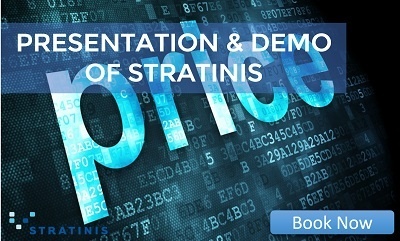
In some industries, if not most, prices have historically only been changed infrequently, but the emergence of Dynamic Pricing and the benefits it brings to sellers is changing that. Dynamic Pricing in itself is simply to update prices (more) frequently based on an underlying pricing model, in order to optimize prices in accordance with demand, competition, market conditions, customer willingness-to-pay and more.
The airline industry has done this for many years: depending on when and how you book, as well as what kind of services you demand, the price has changed quickly. These days it is not uncommon to even get different prices on the same day, based on demand, website searches for that specific route, and a number of other parameters that are all part of the airline's dynamic pricing model.
In the field of dynamic pricing, there are two main ways to execute the dynamic price:
- Pre-calculated, based on parameters that may change daily or weekly, such as purchase costs of raw materials, competitive prices, margin expectations or value-based drivers.Prices are updated daily, weekly or monthly, and then kept constant within that period. Database-wise, the price is stored for a period of time.
- On-demand, ad hoc pricing: whenever a customer needs a price, the dynamic pricing model calculates it on the fly. This is most useful in industries with fixed capacity, e.g. airlines, hotels, but also when quoting for e.g. complex products where each product is effectively unique due to the features the customer is looking for. Here the price doesn't exist in the database before it is called on-demand and quoted.
By adapting prices frequently to the market, what you achieve is that your prices more closely match demand, competitive patterns, supply constraints or other factors that determine if you make a sale and how profitably that sale is. A dynamic pricing model is very likely to improve the average price charged, as changing prices frequently means you better adapt to:
- situations where you would have charged too low a price due to inactivity in price setting, compared to a higher price that you would have been able to charge because customers in that period were willing to pay more,
- situations where you lost the sale because your price was "too high" (as perceived by the customer or versus competition) and you didn't get the sale, and
- situations where you did get a sale but at low profitability, because your price didn't change when e.g. raw material prices went up.
The best performing dynamic pricing models are those implemented in software, as software leads to quicker adaptation to changes in underlying parameters, more accurate and scientific approaches to changes in the environment and lately also the coming of "Machine Learning" to make the pricing models more intelligent and self-adjusting.
Machine Learning in pricing covers the concept of having a second model "learn" about how the primary dynamic pricing model works and performs and then through machine learning adjust the primary model when it is observed that it doesn't deliver optimum results. Kind of optimization of the optimization. While Machine Learning is a bit over-used by technology marketers at the moment , in pricing it does promise and deliver great results.
At Stratinis we have great experience with dynamic pricing models across various industries, from e-commerce to industrial components, consumer goods (promotional pricing), electronics and more. Through our continued R&D we are also developing several new Artificial Intelligence / Machine Learning systems to help improve dynamic pricing even more.
